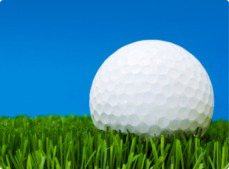The Trouble with Sand
 The deserts are made of sand because that is all that remains of the soil after desertification. The arid climate and the extremes of temperature have removed the organic matter and most of the trillions of soil-based bugs can no longer survive these conditions. A few opportunist plants and animals lie dormant, waiting for the opportunity to complete their life cycles in the brief aftermath of a desert rainstorm and they are as much as the desert can now support. Sand is after all a very infertile growing medium.
The deserts are made of sand because that is all that remains of the soil after desertification. The arid climate and the extremes of temperature have removed the organic matter and most of the trillions of soil-based bugs can no longer survive these conditions. A few opportunist plants and animals lie dormant, waiting for the opportunity to complete their life cycles in the brief aftermath of a desert rainstorm and they are as much as the desert can now support. Sand is after all a very infertile growing medium.
It should not therefore come as much of a surprise to us that if we insist on growing turf on sand, even though there are sound practical reasons for doing so, we are bound to suffer some of the same problems as the desert areas. So we have plenty of water, fertiliser and manpower and we do not suffer from climatic extremes, but there is much more to it than that. Not only is the sand base short of nitrogen, phosphorus and potassium but it also needs trace and other elements which are utterly vital but almost non-existent in sand bases and are usually deficient in turf.
The fact is that the fertility and health of these pitches are dynamically unstable and often hindered by little direct sunlight in winter. We cannot leave them alone as we could a piece of rich pasture to draw on its own resources. Sand is free-draining by design, has few resources, as nutrient retention is very poor and therefore needs regular monitoring and accurate feeding if we are to ensure healthy growth and disease resistance. If the balance is not maintained, then the intricate symbiotic relationship between the soil, mineral nutrients and micro-organisms breaks down, immunity to disease falls away and this allows pathogenic organisms to thrive. It is interesting to note that ‘take-all’ and Fusarium are extremely rare in permanent pasture, but common in intensively grown cereals where the trace element balance has been damaged by excessive use of synthetic fertilisers and chemicals. Our experience is that the chemical onslaught removes the beneficial bacteria and micorrhizal fungi (and most probably other beneficial organisms) that colonise the root zone. Into this chemically induced vacuum comes the vigorous pathogen. This would explain why sand-based pitches and golf greens with high chemical inputs are so vulnerable, particularly in the early years after construction before Nature can begin to assert herself. Where the life expectancy of a pitch is short the correct balance may never be achieved.
At Field Science we have a unique approach to turf nutrition. After detailed soil analysis, we supply a monthly dressing containing everything required except fertiliser and water. Every 3 months we re-test the soil, again in great detail, and then produce the next batch of dressings, tailored exactly to fit the new profile. By this method we can build the fertility and natural immunity of the pitch and greatly reduce the need for fertiliser and chemical input. This technology rejuvenates existing pitches, reduces the time a new one takes to establish and reduces maintenance man-hours.
We do not use any off-the-shelf products; we act as agents for no one and can therefore give unbiased opinions. If a sports ground or golf course can routinely be kept in fine fettle, it will last for years and will save the club concerned a great deal of time and expense.
